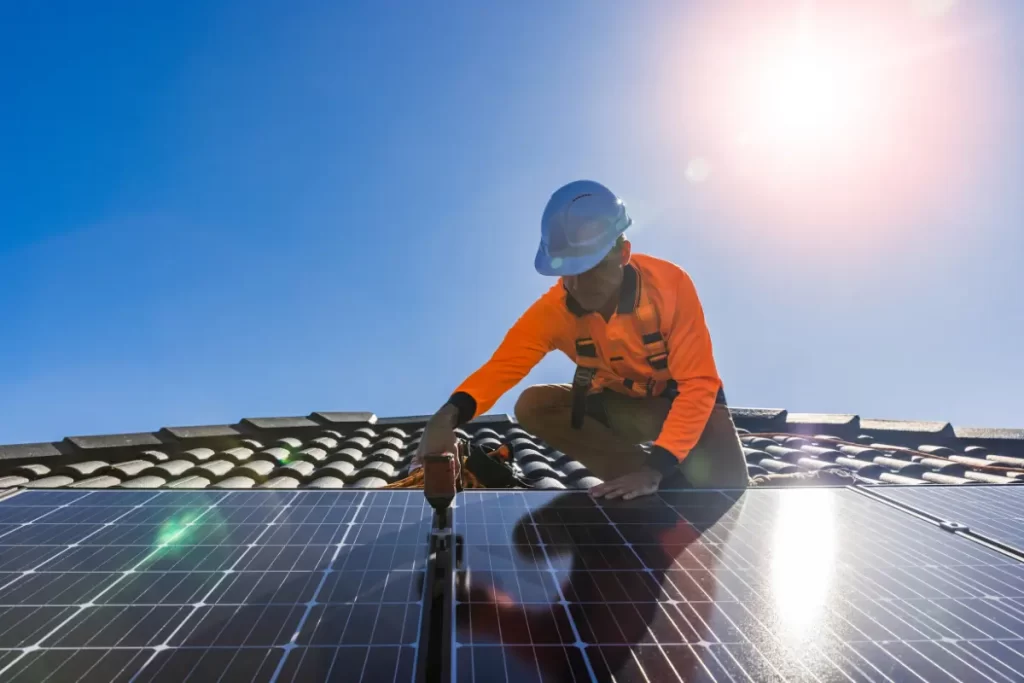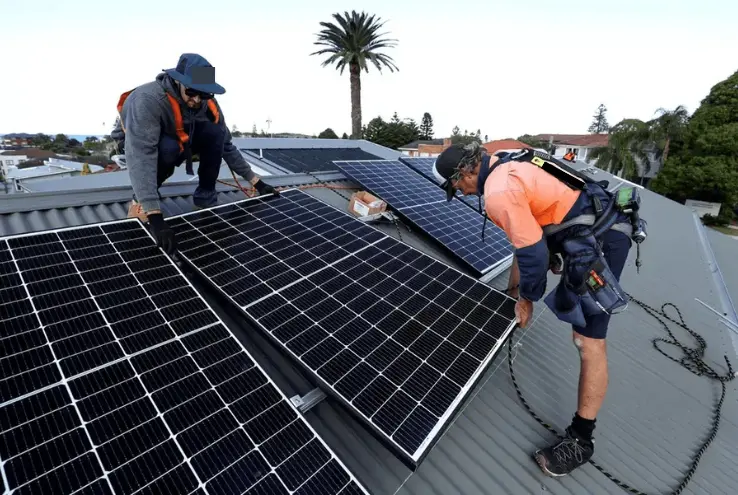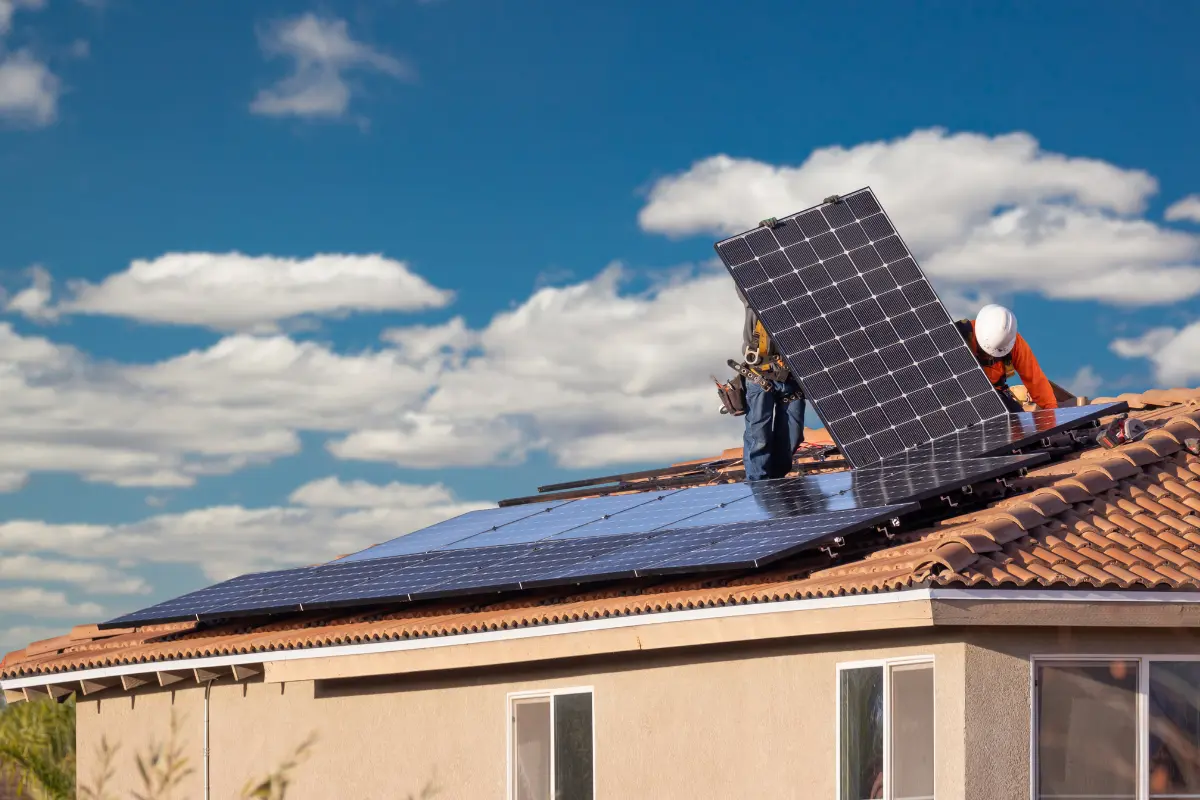Introduction:
Solar energy harnesses the power of the sun to generate electricity and heat, utilizing photovoltaic cells and solar thermal systems. In Australia, with its abundant sunshine, solar energy has become a crucial part of the energy landscape, contributing significantly to reducing greenhouse gas emissions and lowering energy costs. This article aims to provide a comprehensive understanding of how solar panels works in Sydney Australia, covering its basic principles, the current adoption landscape, benefits, challenges, technological advancements, and future prospects. By exploring these aspects, readers will gain insight into why solar energy is vital for Australia’s sustainable energy future.
Solar Energy Basics
Explanation of Solar Energy
Solar energy is the power derived from the sun’s radiation. It can be converted into electricity or heat through various technologies. The two primary methods for harnessing solar energy are:
- Photovoltaic (PV) Cells: These cells convert sunlight directly into electricity. Made from semiconductor materials, usually silicon, PV cells generate a flow of electric current when exposed to sunlight. They are the core component of solar panels.
- Solar Thermal Systems: These systems use sunlight to heat a fluid, which then produces steam to drive a turbine and generate electricity. Solar thermal technologies are often used for large-scale power plants and for providing heat for residential and commercial purposes.

How Solar Panels Generate Electricity
- Conversion of Sunlight to Electricity: Solar panels, composed of numerous PV cells, absorb sunlight. When photons from the sunlight hit the PV cells, they knock electrons loose from their atoms, creating an electric current. This process is known as the photovoltaic effect.
Components Involved:
- Solar Panels: The panels, or modules, consist of multiple PV cells that capture sunlight and convert it into direct current (DC) electricity.
- Inverters: These devices convert the DC electricity produced by the solar panels into alternating current (AC) electricity, which is used by most home appliances and can be fed into the electrical grid.
- Mounting Systems: These structures secure the solar panels to rooftops or ground-based installations, ensuring they are positioned at an optimal angle to capture maximum sunlight.
- Electrical Components: This includes wiring, circuit breakers, and sometimes a battery storage system to store excess energy for later use.
The Australian Solar Landscape
Overview of Solar Energy Adoption in Australia
Australia has seen a significant increase in solar energy adoption due to its abundant sunshine and favourable conditions. The country leads in per capita solar installations, with a substantial portion of its energy mix coming from solar power. Both residential and commercial sectors are rapidly embracing solar technology to reduce energy costs and environmental impact.
Key Statistics and Growth Trends
- As of 2023, Australia boasts over 3 million rooftop solar installations, accounting for a combined capacity of approximately 15 gigawatts (GW).
- Solar power contributes around 10% to the national electricity market, with continued growth expected.
- Large-scale solar farms are also expanding, contributing significantly to the grid and driving down overall energy prices.
Government Policies and Incentives
- Federal and State Programs: The Australian government, along with state governments, offers various programs to encourage solar adoption. These include the Small-scale Renewable Energy Scheme (SRES), which provides incentives for the installation of solar systems under 100kW.
- Subsidies, Rebates, and Feed-in Tariffs: Financial incentives such as rebates and subsidies reduce the upfront cost of solar systems. Feed-in tariffs pay solar system owners for the excess electricity they feed back into the grid, making solar investments more attractive.
By combining robust policies with Australia’s natural solar advantage, the country continues to be a global leader in solar energy adoption and innovation.
Solar Energy Systems in Australia
Types of Solar Systems
- Grid-Tied: These systems are connected to the local electricity grid. They allow homeowners and businesses to use solar power when the sun is shining and draw from the grid when it’s not. Excess electricity generated can be fed back into the grid, often earning credits or payments through feed-in tariffs.
- Off-Grid: Off-grid systems are independent of the local electricity grid. They rely on battery storage to provide electricity when solar power is unavailable, such as during nighttime or cloudy days. These systems are ideal for remote areas where grid connection is not feasible.
- Hybrid Systems: Hybrid systems combine the features of both grid-tied and off-grid systems. They are connected to the grid but also include battery storage. This allows users to store excess solar energy for use during peak demand times or during power outages, offering greater flexibility and reliability.

Residential vs. Commercial Solar Systems
- Residential Systems: Typically smaller in scale, residential solar systems usually range from 3kW to 10kW. These systems are designed to meet the energy needs of a single household, reducing reliance on grid electricity and lowering energy bills.
- Commercial Systems: Commercial solar systems are larger, often ranging from 10kW to several megawatts. These systems are installed on business premises, factories, or large buildings and are designed to offset significant portions of the business’s energy consumption, leading to substantial cost savings and improved sustainability.
Typical System Sizes and Configurations
- Small-Scale Residential Systems: Common sizes include 3kW, 5kW, and 6.6kW, typically installed on rooftops. These systems are sufficient for average households, covering most of their energy needs.
- Medium-Scale Systems: For larger homes or small businesses, systems in the range of 10kW to 30kW are typical. These can cover higher energy demands and may include battery storage for additional benefits.
- Large-Scale Commercial Systems: Systems above 30kW, extending into hundreds of kilowatts, are common for larger businesses and industrial applications. These systems often require ground-mounted installations or large roof spaces and can include advanced features like smart inverters and extensive battery storage solutions.
Understanding these systems’ various types and configurations helps Australians select the best solar solution tailored to their specific energy needs and circumstances.
Benefits of Solar Energy in Australia
Environmental Benefits
- Reduction in Greenhouse Gas Emissions: Solar energy is a clean, renewable source of power that significantly reduces greenhouse gas emissions. By replacing fossil fuels like coal and natural gas, solar power helps mitigate climate change and improves air quality. Every kilowatt-hour of solar-generated electricity offsets a considerable amount of carbon dioxide that would otherwise be released into the atmosphere from traditional energy sources.
- Conservation of Natural Resources: Solar energy harnesses the sun’s power, which is abundant and inexhaustible, unlike finite fossil fuel reserves. Utilizing solar power helps conserve natural resources such as coal, oil, and natural gas, ensuring they are available for future generations. Additionally, solar energy reduces the need for water-intensive processes associated with conventional power generation, contributing to water conservation efforts in a country often facing drought conditions.
These environmental benefits make solar energy a key component of Australia’s strategy to build a sustainable and resilient energy future.
Economic Benefits
- Cost Savings on Energy Bills: One of the most immediate and tangible benefits of solar energy is the reduction in electricity bills. By generating their own electricity, homeowners and businesses can significantly lower their reliance on the grid, leading to substantial savings over time. In some cases, excess electricity can be sold back to the grid, providing an additional source of income through feed-in tariffs.
- Increase in Property Value: Properties equipped with solar energy systems often see an increase in market value. Buyers are attracted to homes and commercial properties that offer lower ongoing energy costs and enhanced sustainability. Studies have shown that solar installations can make properties more appealing and potentially command higher selling prices.
- Job Creation and Economic Growth: The solar energy sector is a significant driver of job creation in Australia. From manufacturing and installation to maintenance and sales, the industry supports a wide range of employment opportunities. As solar energy continues to grow, it stimulates economic growth by attracting investments, fostering innovation, and creating a robust market for renewable technologies. This growth not only benefits the environment but also contributes to the overall economic health of the country.
These economic benefits highlight why solar energy is an increasingly attractive option for Australian homeowners, businesses, and policymakers.

Challenges and Considerations
Initial Installation Costs
- The upfront cost of installing solar panels can be significant, including expenses for the panels, inverters, mounting systems, and labor. While government incentives and rebates can mitigate some of these costs, the initial investment remains a barrier for some households and businesses.
Variability in Solar Energy Production
- Solar energy production depends on sunlight, which can be inconsistent due to factors like cloud cover, time of day, and seasonal changes. This variability means that solar systems may not always generate electricity at maximum capacity, requiring users to rely on the grid or battery storage during low production periods.
Maintenance and Lifespan of Solar Panels
- Solar panels generally require minimal maintenance, but they do need occasional cleaning and inspections to ensure optimal performance. Inverters and batteries also need maintenance and may need to be replaced every 5-10 years. The typical lifespan of solar panels is around 25-30 years, after which their efficiency may decline, necessitating replacement.
Impact of Weather and Climate Conditions
- Extreme weather conditions, such as hailstorms, heavy rains, or high winds, can damage solar panels or reduce their efficiency. While panels are designed to withstand various weather conditions, severe weather events can pose risks. Additionally, areas with less sunlight or frequent cloudy days may experience lower overall solar energy production.
Understanding these challenges and considerations is crucial for making informed decisions about investing in solar energy. Addressing these factors can help maximize the benefits and ensure the long-term viability of solar installations in Australia.
Technological Advancements and Innovations
Advances in Solar Panel Efficiency
- Recent developments in solar panel technology have significantly improved efficiency, allowing panels to convert more sunlight into electricity. Innovations such as monocrystalline and bifacial panels, as well as the use of advanced materials like perovskites, have pushed efficiency rates beyond 20%, making solar power more viable and cost-effective.
Energy Storage Solutions (Batteries)
- Energy storage systems, particularly lithium-ion batteries, have become more efficient and affordable, allowing for better storage of excess solar energy. These advancements enable households and businesses to store power generated during the day for use at night or during cloudy periods, enhancing the reliability and flexibility of solar energy systems.
Smart Grid Technology and Its Integration with Solar
- Smart grids represent a major leap forward in the integration of solar energy. These grids use digital communication technology to monitor and manage electricity flow more effectively, facilitating the integration of distributed energy resources like solar panels. Smart grids can balance supply and demand in real-time, reduce energy losses, and enhance the stability and resilience of the power grid.
Emerging Trends
- Solar Tiles: Solar tiles are designed to blend seamlessly with traditional roofing materials, offering an aesthetically pleasing alternative to conventional solar panels. These tiles serve dual purposes, providing both electricity and roof coverage.
- Bifacial Panels: Unlike traditional panels that only capture sunlight from one side, bifacial panels are capable of capturing reflected light from the ground and other surfaces, increasing overall energy production.
- Floating Solar Farms: These installations on bodies of water maximize space usage and can improve efficiency due to the cooling effect of water on the panels.
- Perovskite Solar Cells: A new material in solar cell technology, perovskites promise higher efficiency at a lower cost and with greater manufacturing flexibility than traditional silicon-based cells.
These technological advancements and innovations are driving the solar industry forward, making solar power more efficient, affordable, and accessible for a broader range of applications in Australia.
The Future of Solar Energy in Australia
Predictions and Projections for Solar Energy Growth
- The future of solar energy in Australia looks promising, with continued growth anticipated in both residential and commercial sectors. According to industry forecasts, Australia’s solar capacity is expected to double by 2030, driven by declining costs of solar technology and increasing environmental awareness. The country aims to achieve significant portions of its electricity from renewable sources, positioning solar as a key component of its energy mix.
Potential Changes in Policies and Regulations
- As solar technology advances and its adoption grows, policies and regulations are likely to evolve. Governments may introduce more robust incentives and subsidies to encourage solar installations and improve grid infrastructure to support higher penetration of renewable energy. Additionally, policies may focus on integrating energy storage solutions and enhancing the resilience of the energy grid. Regulations surrounding solar panel recycling and disposal will also become more prominent as the market matures.
Emerging Markets and Opportunities
- Agrivoltaics: Combining agriculture and solar power, agrivoltaics involves installing solar panels on farmland. This dual-use approach can enhance land efficiency, providing both energy and agricultural outputs.
- Floating Solar Farms: The potential for floating solar farms on reservoirs and lakes is significant in Australia, offering an innovative solution to land constraints and improving panel efficiency through water-based cooling.
- Microgrids and Off-Grid Solutions: In remote and rural areas, microgrids powered by solar energy can provide reliable electricity, reducing dependence on diesel generators and extending energy access.
- Electric Vehicle (EV) Integration: As the EV market grows, there will be increased opportunities for integrating solar energy with EV charging infrastructure, promoting cleaner transportation solutions.
- Commercial and Industrial Solar Projects: Large-scale solar projects for commercial and industrial sectors will continue to rise, driven by the need for sustainable energy solutions and cost savings.
The future of solar energy in Australia is bright, with expanding opportunities and innovative solutions paving the way for a more sustainable and energy-efficient nation.
Conclusion
In conclusion, solar energy plays a crucial role in Australia’s energy landscape, offering numerous benefits and opportunities for sustainable development. Throughout this article, we’ve explored the basics of solar energy, its adoption landscape in Australia, benefits, challenges, technological advancements, and future prospects.
We’ve learned how solar energy reduces greenhouse gas emissions, conserves natural resources, lowers energy bills, increases property value, creates jobs, and drives economic growth. Despite challenges such as initial installation costs and variability in energy production, technological innovations and policy support continue to drive the growth of solar energy in Australia.
It’s clear that investing in solar energy is not only environmentally responsible but also economically advantageous. As we look to the future, it’s essential to recognize the significance of continuing to embrace solar solutions. By harnessing the power of the sun, we can build a more sustainable, resilient, and prosperous future for Australia and future generations. Therefore, I encourage readers to consider the benefits of solar energy and explore opportunities to incorporate solar solutions into their homes, businesses, and communities. Together, we can accelerate the transition to a clean energy future and contribute to a healthier planet for all.


